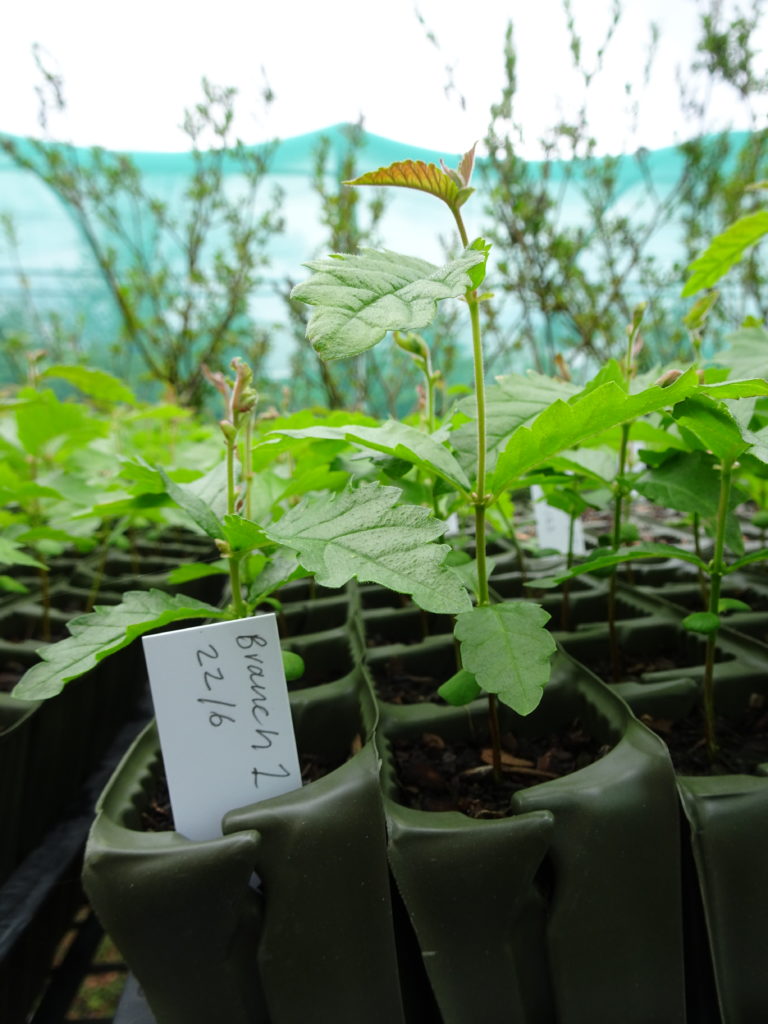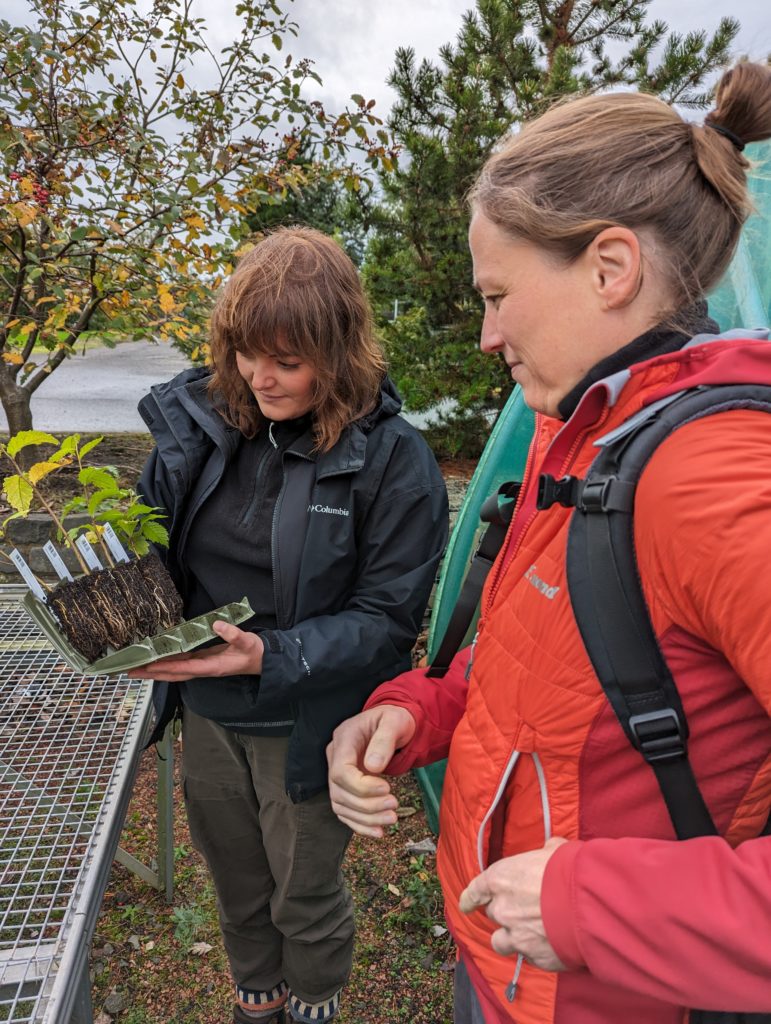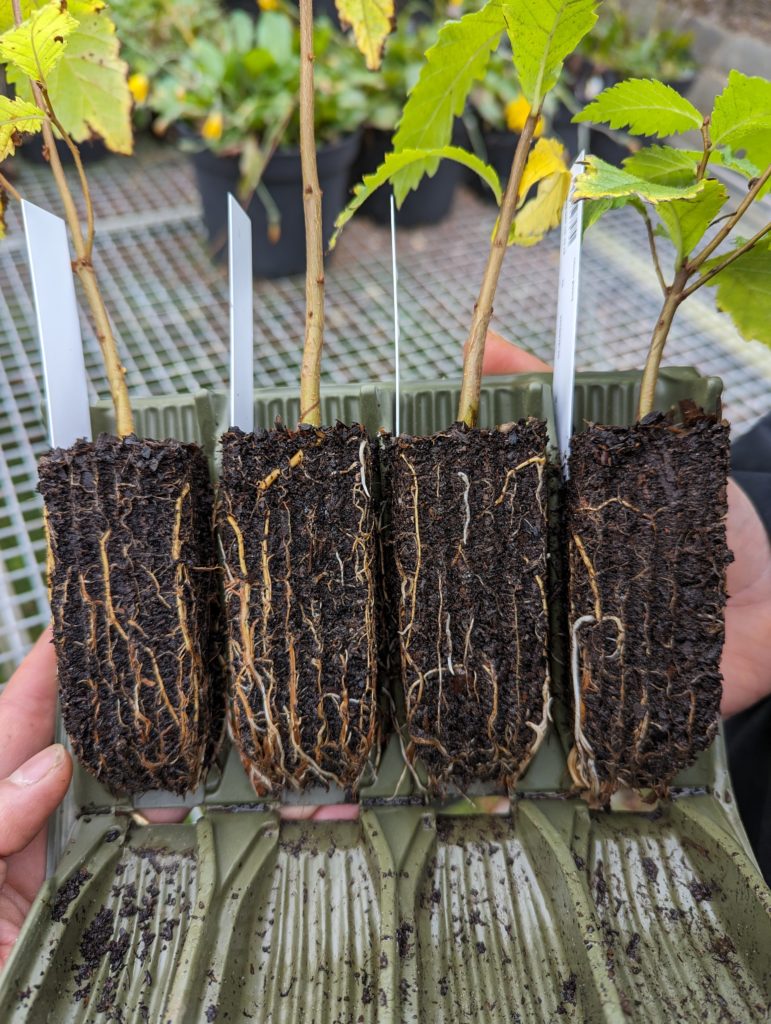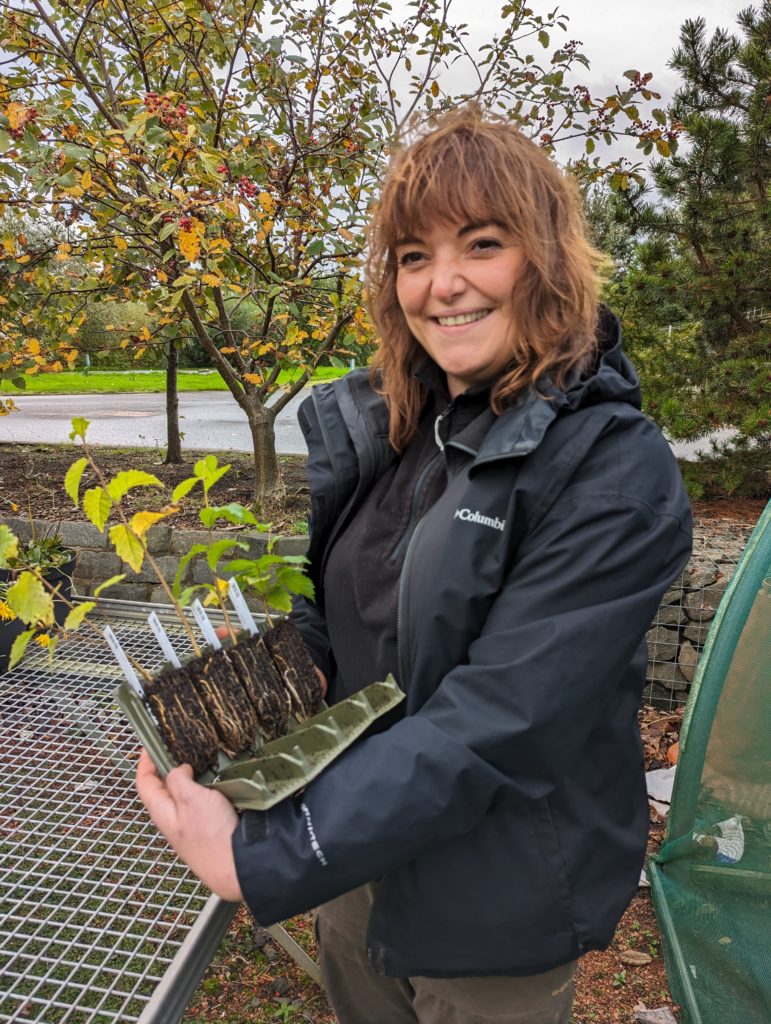I imagine that releasing a red kite or a golden eagle as part of a species reintroduction programme is a pretty emotional moment. That animal, raised in captivity, is now free and must fend for itself if it is to survive. An enormous amount of effort goes into the build up to that moment of release.
It will be with a mixture of excitement and trepidation when the plants go in the ground and then we walk away.
Emma Beckinsale, Scottish Plant recovery lead on woody plants
This winter the Scottish Plant Recovery project will begin putting plants back into their natural habitats: a major milestone. It will be with a mixture of excitement and trepidation when the plants go in the ground and then we walk away. Will they be eaten by herbivores, or killed by drought? We will have done everything we can in the planning and lead up to this momentous event to enhance their chances.

It’s also worth saying that moving plants from cultivation to the wild is the absolute last resort as it carries risks of accidentally transferring pests and diseases to new places where they may become a problem. When populations have become so small and isolated that they are on the edge of viability the so-called ‘translocation’ of individuals becomes a risk we manage with great care. We will be exploring the biosecurity measures required in some future posts.
The aim is that the translocated plants begin to spread and rebuild a viable population so that no more planting is required. The term ‘dynamic restoration’ is a good description of the approach as it highlights that we are both restoring species by actively introducing them but then relying on dynamic natural processes – reproduction and regeneration – to do the real work of creating sustainable populations.

Our first candidates for the journey back to the ‘wild’ are a group of about 250 wych elm seedlings. This species has been severely impacted by a fungal pathogen called Dutch elm disease. Survival in areas of active disease is around 1% of the original population of trees. The survivors are so thinly spread that cross-pollination between these promising trees is highly unlikely to occur naturally. We have created a new generation of seedlings by moving the pollen to selected mother trees where we can control the pollination process using specially design pollination bags. More details of this can be found in the post called Next gen elms.
From seed to sturdy sapling only takes five months as wych elms are unusual in having no seed dormancy. Ripe seed will germinate in a matter of days if given suitable moist conditions. The subsequent growth is rapid and we now have plants that need to go into their carefully selected home rather than spending another year in pots.

Discussions with landowners in the Scottish Borders, Perthshire and the Highlands are underway to select the most promising sites where large areas of suitable habitat are present and where deer have been controlled and sheep removed. These animals are what hold back woodland regeneration and for elm we need to be particularly conscious of this threat as it is a tree species that is particularly tasty. Elms are regularly lopped in many countries as a traditional source of ‘leaf hay’ and this probably took place in Scotland in the past.
If all goes well the young trees will begin reproducing within 20 years and the natural spread that we are aiming for will be underway. The recovery of wych elm at these sites can then happen naturally and without the need for any further planting.



- X @TheBotanics
- X @nature_scot
- X and Facebook @ScotGovNetZero
- Facebook @NatureScot
- #NatureRestorationFund
